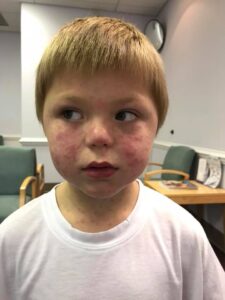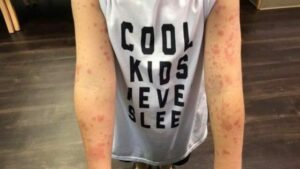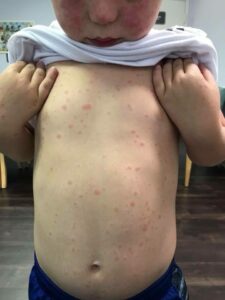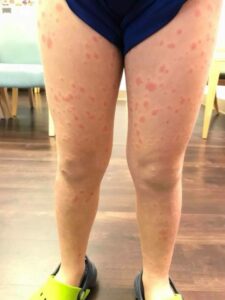As the temperature on earth gets warmer year after year, the number of bugs and ticks grows.
According to an American study for example, tick-based diseases have tripled in the last 15 years.
No matter how many times experts urge us to wear long pants and long sleeved shirts, it’s not always easy to follow their advice during hot summer months.
And staying in is not quite an option either — nothing bids us outdoors quite as much as a shining sun and warm temperatures after a long, difficult winter.
But with that said — it’s important to remain cautious.
Nobody needs to go through what five-year-old Mason McNair did. Unfortunately, his experience is more common than we think, and can occur with significantly worse consequences, too.

It all began when Mason was out playing with his grandparents one day. They were out in nature and having a great time.
But as Mason’s grandmother was later bathing him at home, she discovered a tick in his navel.
She safely removed the tick, but the area was still red and swollen. They visited a doctor who prescribed the boy antibiotics, but soon things only worsened.
The boy began to develop a rash, had fever and had stomach pains.

“It really just looked like heat rash. We had been outside that weekend, it was really hot,” Danielle McNair, Mason’s mother, says.
The rash, however, began to spread rapidly and soon covered large parts of his body. The family doctor however told the family that there was nothing to worry about.

The red spots were thought to be a delayed response to the antibiotic treatment.
“I wasn’t satisfied with the answer. I started to do my online search. I called my sister, who is a veterinarian,” Danielle

In the end, the worried mother demanded that the doctor help identify the tick-related disease that she was convinced her son had.
Danielle was sure Mason had a condition known as Rocky Mountain spotted fever (RMSF).
A tick bite can not only cause borrelia and TBE. Research has shown that ticks also RMSF — an infection similar to borrelia.
And it was exactly that which poor Mason had contracted.

Symptoms include fever, headache and rash — everything was consistent with the boy’s symptom.
Unfortunately, RMSF is not as well known as borrelia and TBE, which causes many to miss it and disregard its symptoms.
Found in different areas
Despite the name, RMSF does not only affect people living near mountains. It has been found in several parts of America as well as the rest of the world.
Individuals suffering from it require a special kind antibiotic treatment.
Danielle is now sharing her and her son’s experience to raise awareness of this potentially fatal disease.

“If I hadn’t done my own research and continue to push it, we would be in a completely different situation with my son. And that is scary. That is so scary,” she says.
It’s a good thing that this young mother pressed on to find out what was really happening to her son.
In June 2017, a 2-year old girl died of the same disease after the doctor failed to correctly diagnose her.
According to Dr. Paige Armstrong, Medical Epidemiologist at Centers for Disease Control and Prevention, children in particular tend to show unusual symptoms when contracting this disease.
“Protect your child”
This is the most likely reason that children are so often misdiagnosed. Danielle is now keen on raising awareness.
“I want to empower parents to always, always be an advocate for your child. Use your own voice, definitely do your own research. Doctors are humans, too, they’re human, too. That doesn’t mean they know every single thing,” she says.
Today, Mason is fully recovered, thanks to Danielle getting the correct diagnosis before it was too late.






